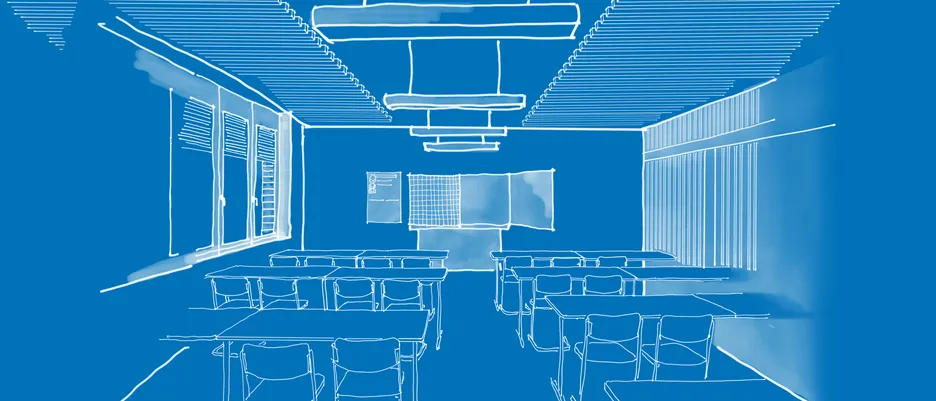
Evaluating the current status of school buildings and future school buildings with regard to sustainable, cost-efficient and conceptual architecture in conjunction with the quality of indoor comfort
For a while now the school building not only defines its role as a building where knowledge is mediated but rather as a place there learning, playing, stay, happiness and anger happen. A place where you meet friends, carry out conflicts and spent the majority of time growing up. Children, adolescents and also teachers are not only shaped by the interaction but also to a considerable part by the places and premises in which they stay.
On a daily basis planners and users have to pose themselves the question what an appropriate school means today. They have to respond to changes in school, teaching and learning concepts that have increasingly been introduced in the past years and have to present conversion possibilities. The existing, partially historic school buildings have to be able to adjust to these reformations and have to match changing student numbers along with the need for new classrooms.
At the same time we live in a time where we are challenged more than ever to sparingly use our resources. Diminishing fossil energy sources and the connected need to switch to renewable resources play an equally big role in the renovation or construction as cost efficiency since the majority of school buildings is financed through government resources.
Hence the challenge is a balancing act between the requirement for low costs and saving resources in new buildings and renovations and at the same time creating architectural quality as well as optimal comfort.
With the comparing evaluation of the current state of the school building sector selected examples of new and old buildings as well as renovation projects from different building age categories will be investigated and analyzed. The results will demonstrate what positive solutions look like and where problems can arise. From that planning tips for future school renovations and new buildings will be derived. Five topics will be regarded in detail:
- Context and use
- Process and planning
- Material and construction
- Room and comfort
- Technology and energy
The ratio of architectural quality and “energetic sustainability” will be addressed and set into a new relation to each other to arouse the interest of a wider public.